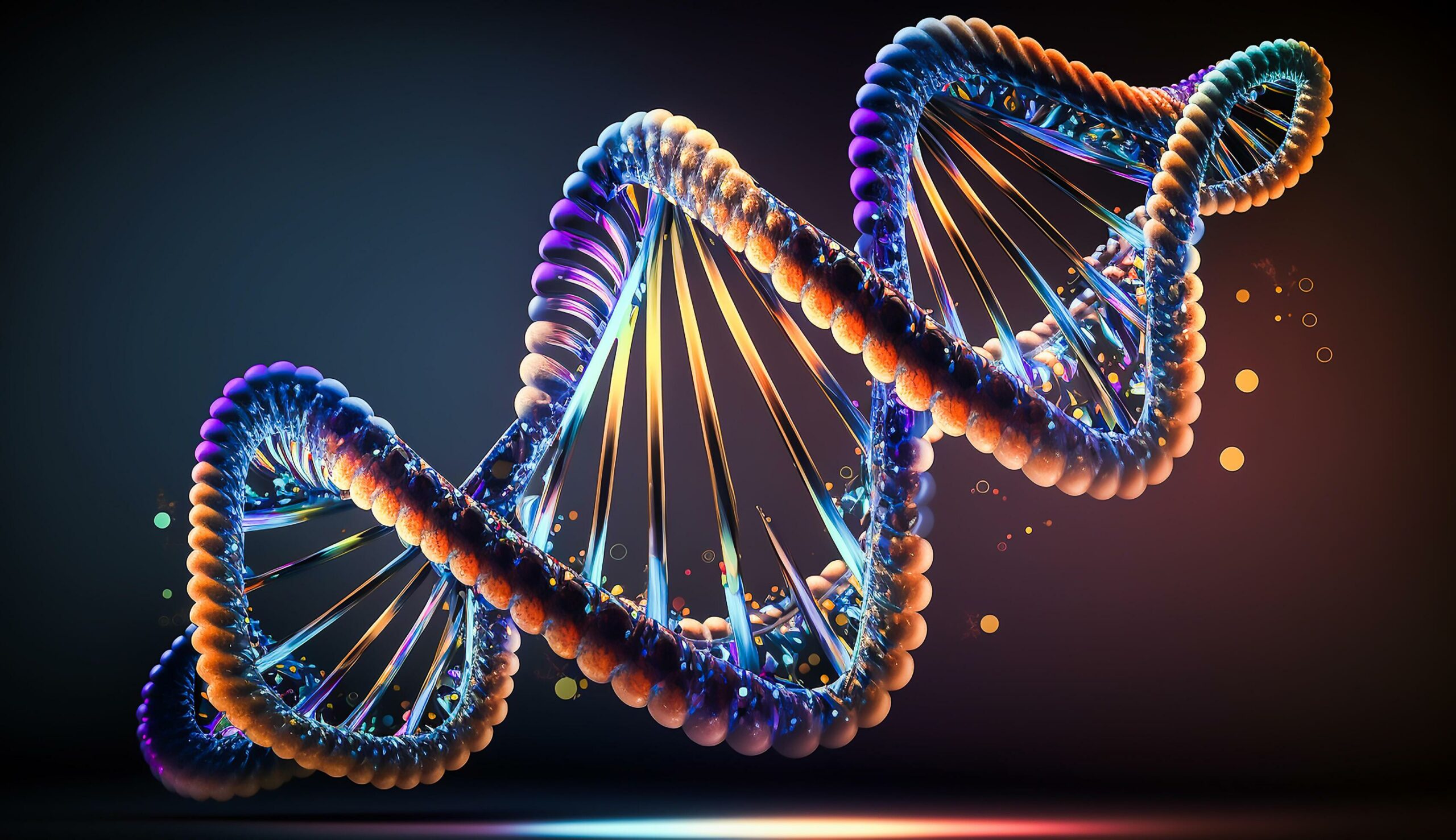The human genome, a vast repository of genetic information, is often described as a monumental construct of biological architecture. At its core lies the DNA backbone, a molecular framework integral to genetic functionality and stability. This discourse explores the profound concept of the DNA backbone as a ‘molecular highway,’ facilitating not only structural integrity but also signaling pathways crucial for cellular processes. Understanding this multifaceted role of DNA will illuminate the intricate relationship between molecular structure and biological activity.
At the outset, it is essential to delineate the structural composition of DNA. The backbone of DNA is primarily composed of alternating sugar (deoxyribose) and phosphate groups. Each sugar molecule is covalently linked to a nitrogenous base—adenine, thymine, cytosine, or guanine—forming the rungs of the helical ladder. This dual-layered architecture grants the DNA molecule its stability and facilitates a myriad of essential functions, ranging from genetic encoding to cellular communication.
One of the most fascinating aspects of the DNA backbone is its ability to conduct electrical signals. This phenomenon, often likened to a highway for molecular transport, hinges on the presence of charged phosphate groups that provide a conduction pathway. Recent studies suggest that DNA can function akin to a semiconductor, where the sugar-phosphate backbone allows for the movement of electrons along the length of the molecule. This electron conduction is pivotal for various biochemical processes, thereby elevating the DNA backbone’s role from mere structural custodian to an active participant in cellular signaling.
The notion of DNA as a conductor invites a deeper exploration into how this property manifests in wider biological contexts. For instance, the ability of DNA to facilitate electron transport is crucial during cellular respiration and photosynthesis. In these processes, specific DNA sequences can influence the efficiency of electron flow, ultimately determining the energy output of the cell. Moreover, the electronic properties of DNA suggest possibilities for novel biocompatible electronic devices, paving the way for future innovations in bioelectronics.
Examining the dynamic nature of the DNA backbone reveals additional layers of complexity. The flexibility inherent to the DNA structure permits it to undergo conformational changes in response to various stimuli. This adaptability is vital during processes such as replication and transcription, where the DNA molecule must navigate through a series of spatial transformations to allow enzyme access. The conformation-dynamics relationship emphasizes the importance of the DNA structure in regulating gene expression and replication fidelity.
Furthermore, the implications of the DNA backbone’s conductive properties extend to fields such as genetic engineering and synthetic biology. The identification of DNA as a molecular highway has catalyzed research into manipulating genetic sequences to create bio-based electronic devices. These developments could revolutionize how biological systems are integrated with electronic components, leading to breakthroughs in medical diagnostics and therapeutic interventions. The concept of utilizing DNA as a conductive medium enhances the versatility of genetic engineering, allowing for the design of intricate molecular circuits that mimic natural biological processes.
The evolutionary perspective on DNA’s structure serves to underline the significance of its molecular arrangements. Over billions of years, the genetic material has adapted to fulfill the extensive demands of diverse living organisms. This evolutionary endurance can be attributed to the inherent efficiency of the DNA backbone in maintaining genetic stability and facilitating rapid adaptation to environmental changes. The dual role of the DNA backbone as both a structural element and an electrical conductor has implications for understanding evolutionary pressures and the mechanisms by which organisms adapt to their surroundings.
As we advance into an era of genomic technologies and molecular innovations, the exploration of DNA as a conduit for electronic conduction bears profound implications. Researchers are investigating the potential of DNA nanostructures to form networks that can conduct electricity, leading to the development of DNA-based materials for use in nanotechnology. The ability to design molecular devices that leverage the unique conductive properties of DNA opens new avenues for functionality that integrate seamlessly with biological systems.
In addition to technological implications, the conductive attributes of the DNA backbone also raise philosophical questions regarding the essence of life itself. The analogy of DNA as a ‘molecular highway’ incites considerations about the interplay between structure and information. Life can be viewed as an intricate tapestry where molecular interactions and conductive pathways relay information crucial for survival. Exploring these dynamics enriches our understanding of biology as an interdisciplinary nexus, where physics, chemistry, and molecular biology converge.
Finally, the study of DNA as a molecular highway invites continued investigation into its potential applications across various scientific domains. The convergence of biology and technology, facilitated by the unique properties of the DNA backbone, heralds exciting advancements that may one day change the landscape of medicine, computational biology, and environmental sustainability. As researchers delve deeper into the nuances of this fascinating molecular architecture, the true potential of the DNA backbone may yet unveil itself, reaffirming its status as one of biology’s most remarkable structures.
In conclusion, the DNA backbone indeed functions as a molecular highway, intertwining structural stability and electrical conduction in a manner that underpins essential biological processes. The duality of this backbone promotes a deeper comprehension of life’s intricate mechanisms, extending its implications into technological innovation and evolutionary resilience. Consequently, the exploration of DNA will undoubtedly illuminate not only the enigmatic processes that govern life but also the pathways toward the future of bio-integrated technologies.










